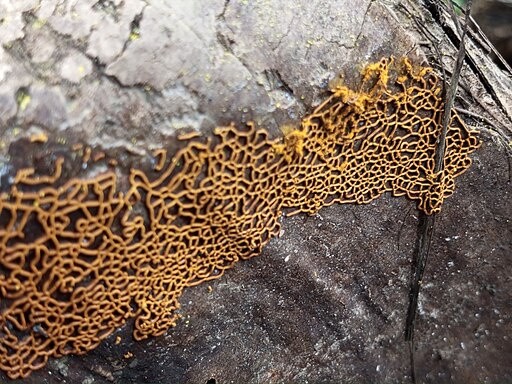As the forest floor is covered with leaf litter, it is also home to yellow, oozing organisms that thrive on decaying logs and other moist areas. Also known as "demon droppings" and "rotting mucus," the slime molds (Physarum polycephalum) are members of Kingdom Protista with diverse cellular forms and broad geographic distribution.

Each slime mold consists of just a single, giant cell, yet it can have complicated and intelligent behaviors. Ecologist and entomologist Tanya Latty researched slime molds extensively in her laboratory in Sydney, Australia. She came up with a list of smart things slime molds can do that challenge how we think about cognition and problem-solving.
1. Smelling Food
Human noses contain receptors that help detect chemicals wafting off of food into the air. Almost the same thing is used by slime molds, except that their receptors are found all over their cell body. These aid them in finding chemical cues that tell that food is nearby.
Slime molds also possess many receptors tuned to various environmental cues, like moisture or pH. Furthermore, they can detect light using photoreceptors similar to the human eye. This means that even if a slime mold is just a single cell, it can actually "smell" and "see" using a slightly different mechanism.
2. Reforming When Torn Apart
Protoplasm is one of the remarkable features of slime molds. Since every tiny bit of this organism is interchangeable, each unit can become a vein or a pseudopod.
In research conducted by German scientists, slime molds were shredded into thousands of tiny fragments, after which they slowly joined back together. Unlike other single-celled organisms, slime molds barely have membranes at all. This means that if an individual mold is cut into two bits near each other, they will flow together again.
3. Choosing a Healthy Diet
In her laboratory research, Latty discovered that slime molds tend to move toward a substance like sugar and avoid substances like salt. This raises whether this act is a response to stimuli or something else.
To understand slime mold nutrition, Latty and her team presented Physarum with 35 recipes of different ratios of the elements it needs to survive. They discovered that slime molds tend to avoid food sources that could be harmful and prioritize food that could help them.
4. Remembering Situations
Latty discovered that slime molds rarely retrace their steps while searching for food, indicating they could remember where they had been. Just as ants leave trails of pheromones to remember where they have found food, the slime left behind by these protists serves as an "external memory" that tells the mold to search elsewhere.
5. Teaching Others What They Have Learned
If two slime molds are placed next to each other, they can combine by fusing their membranes. They do this by opening their insides and intertwining their veins to create a new single organism.
Scientists discovered that if slime molds that had learned to tolerate salt socialized with slime molds that hadn't for three hours, they would come up with all slime molds that like salt.
RELATED ARTICLE : Single-Cell Slime Mold Can Remember Food Locations, Puzzling Scientists
Check out more news and information on Slime Mold in Science Times.
© 2025 ScienceTimes.com All rights reserved. Do not reproduce without permission. The window to the world of Science Times.











